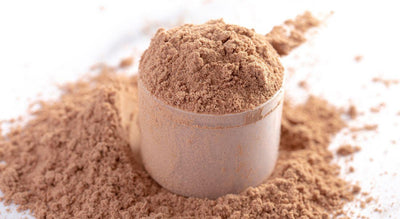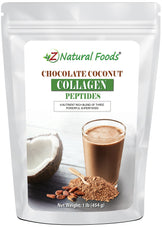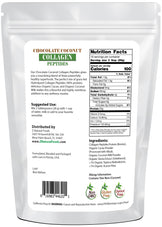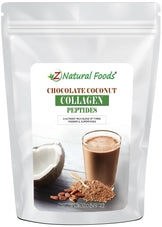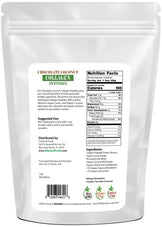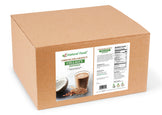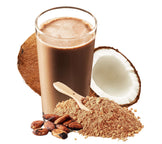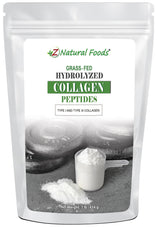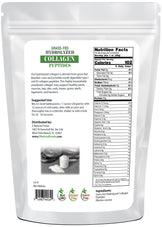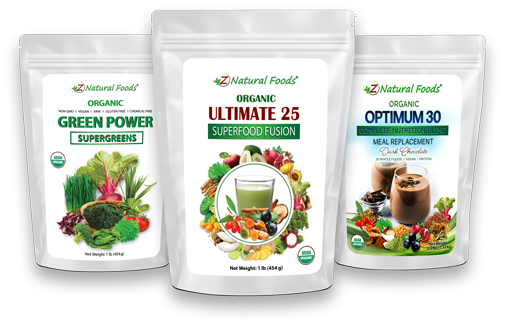Description
Description
When considering what supports the thriving human species, carefully looking at what nourishes our structural foundation is essential.
The foundation of the human structure is a perfect creation of bones, joints, ligaments, cartilage, tendons, and muscles.
These moving parts have been strategically created to support one another in optimizing movement, agility, and strength and to protect our anatomy and physiology. In simple terms, it is support for optimally surviving and thriving.
Unfortunately, as we age, these essential parts eventually wear down.
What makes collagen protein so unique?
Collagen contains some unique compounds that are found in no other food. These unique attributes make collagen a genuinely fantastic food and traditionally considered foundational for what ails you.
To answer what makes collagen so unique, it is vital to understand what exactly collagen is and what its functions are.
What is collagen and its functions?
First, let’s discuss the breakdown and function of collagen.
Collagen is a protein the body produces that supports the structure and function of hair, skin, nails, cartilage, bones, blood vessels, and connective tissue. It is the human body's most abundant protein, representing 35% of its dry weight. It comprises 19 essential and nonessential amino acids and three chains wound into a tight helix, each 1400 amino acids long.
Collagen is primarily made up of the amino acids Glycine (33% of total collagen), hydroxyproline and proline (22% of total collagen), and glutamate (derived from its precursor glutamine and an essential precursor for proline).
While there are technically 28 types of collagen that differ based on molecular assembly, cell components added, and where the collagen is used in the body, there are five primary types.
- Type I makes up 90% of your body’s collagen and is densely packed to provide structure for your skin, bones, tendons, and ligaments.
- Type II is found in elastic cartilage, gives cartilage strength and elasticity, and provides joint support. It supports the binding process with the help of fibronectin (A glycoprotein that plays an essential role in tissue repair) and other collagens.
- Type III is a significant extracellular matrix component found in muscles, arteries, blood vessels, and organs. Specific to tissues with large portions of elastic fibers. Type III collagen also interacts with platelets in the blood clotting cascade and is an essential signaling molecule in wound healing.
- Type IV is the primary component of basement membranes (thin layers of the extracellular matrix that form supportive structures) found in layers of your skin, forming their backbone.
- Type V is a fibrillar collagen (essential for forming collagen fibers) of types I and III collagen, optimal for the formation and quality of tissue. Type V collagen contributes to the bone matric, corneal stroma, and interstitial matrix of muscles, liver, lungs, and placenta.
Next, let's review the attributes of hydrolyzed collagen.
It is crucial to understand that hydrolyzed collagen may go by several other names, like collagen hydrolysate and collagen peptides. All collagen, by definition, is technically hydrolyzed, but there are different levels to this process (partially and fully).
For example, gelatin is partially hydrolyzed, and collagen peptides are fully hydrolyzed. Finally, hydrolyzed collagen is, by definition, a denatured protein. Now, to understand what hydrolyzed collagen is, it is also essential to understand the hydrolyzation process. Hydrolyzed collagen is created through hydrolysis, a process where water molecules rupture the chemical bond.
There are various methods to complete this process and produce hydrolyzed collagen.
Gelatin vs. Hydrolyzed Collagen
This comparison is about something other than which form is better; it is for clarification so you understand these raw materials' use and proper application.
As mentioned earlier, there are two levels to the hydrolyzation process:
Partially and fully hydrolyzed
Gelatin is a partially hydrolyzed collage because it does not go through the crucial step of being broken down by enzymes.
Partially hydrolyzed gelatin also has a higher molecular weight, making it soluble only in hot water and solidifying in cold water. While this makes a superior ingredient as a thickening agent in soups, stews, and desserts, it is also excellent for making gummies.
However, some might consider this less versatile. You may also know this raw material by its other name, JELLO. As your mother used to tell you, “There is always room for jello.”
Fully hydrolyzed collagen (collagen peptides) is soluble in hot and cold liquids and highly versatile. In simple terms, gelatin is the cooked form of collagen, and hydrolyzed collagen is gelatin that has been more highly processed to break up the protein chain for better absorption.
So, what is the difference between the different sources of collagen?
In simple terms, this comes down to the animal from which the collagen is sourced.
It is essential to understand that while each source primarily contains an abundance of one or two specific types of collagen, all sources have small amounts of a wide range of collagen types.
Chicken Collagen
Chicken is primarily made up of Type II collagen, found in elastic cartilage, which gives cartilage strength and elasticity and provides joint support. It supports the binding process with the help of fibronectin (A glycoprotein that plays an essential role in tissue repair) and other collagens.
This type of collagen is derived from chicken sternum cartilage. In simple terms, type II collagen is a peptide and component of joint cartilage. Type II collagen can be found as hydrolyzed or undenatured.
In a randomized controlled trial to determine the efficacy of undenatured type II collagen in modulating knee osteoarthritis symptoms, the results showed that the collagen group demonstrated a significant reduction in the overall WOMAC score (Western Ontario McMaster Universities Osteoarthritis Index) compared to the placebo group. Therefore, it was concluded that this specific form of undenatured type II collagen is well tolerated and improves knee symptoms.
Beef Collagen
A good portion of the market's hydrolyzed / peptide collagen products come from beef bones(unless otherwise noted) and are a quality source of Types I and III. As mentioned earlier in the article,
- Type I makes up 90% of your body’s collagen and is densely packed to provide structure for your skin, bones, tendons, and ligaments.
- Type III is a significant extracellular matrix component found in muscles, arteries, blood vessels, and organs. Specific to tissues with large portions of elastic fibers. Type III collagen also interacts with platelets in the blood clotting cascade and is an essential signaling molecule in wound healing.
While more human research is necessary, there is preliminary evidence that speaks to the potential of beef-sourced collagen. An article titled Collagen hydrolysate for the treatment of osteoarthritis and other joint disorders: A literature review concluded that a growing body of evidence provides a rationale for using collagen supplements for people with Osteoarthritis.
In a double-blind, placebo-controlled, randomized clinical study on the effectiveness of collagen peptides on knee Osteoarthritis specific to improvement in treatment, “There was a significant reduction from baseline to Visit 7 in the primary endpoints of WOMAC and VAS scores and the secondary endpoint of QOL score in subjects with PCP and BCP groups, while in subjects with the placebo group, the endpoint indices remained unaltered.
Furthermore, all the score levels of WOMAC, VAS, and QOL decreased significantly (P < 0.01) in the study group compared to the placebo group in Visit 7.”
Therefore, it was concluded, “The study demonstrated that collagen peptides are potential therapeutic agents as nutritional supplements for the management of osteoarthritis and maintenance of joint health.”
Marine Collagen
Marine collagen is a form of collagen sourced from the bones, skin, fins, and scales of fresh or saltwater fish, jellyfish, sponges, sea urchins, octopus, squid, and prawn. Marine collagen is primarily made up of Type I. According to the Journal of Applied Pharmaceutical Science, marine source collage has advantages over a land animal source.
- Free of zoonoses such as BSE, TSE, and FMD
- A high content of collagen
- Environment friendly
- Has lower body temperature than animals, thereby aiding in greater absorption
- A greater absorption is due to low molecular weight.
- Less significant religious and ethical constraints
- Minor regulatory and quality control problems
- The presence of biological contaminants and toxins is almost negligible
- Low inflammatory response
- Less immunogenic
- Metabolically compatible
In simple terms, unlike all other protein sources that help build and sustain healthy muscle tissue (due to a more balanced and complete amino acid profile), collagen is an excellent source of the building blocks for functional material used to make connective tissue for our skin, hair, nails, bones, joints, and organs.
These 3 amino acids make collagen protein incredibly unique
Ultimately, what most people consider to be collagen’s greatest pitfall of being an incomplete protein is, in fact, its most significant attribute and what makes collagen such an outstandingly unique food.
To review all of our collagen and protein powders, go here:
